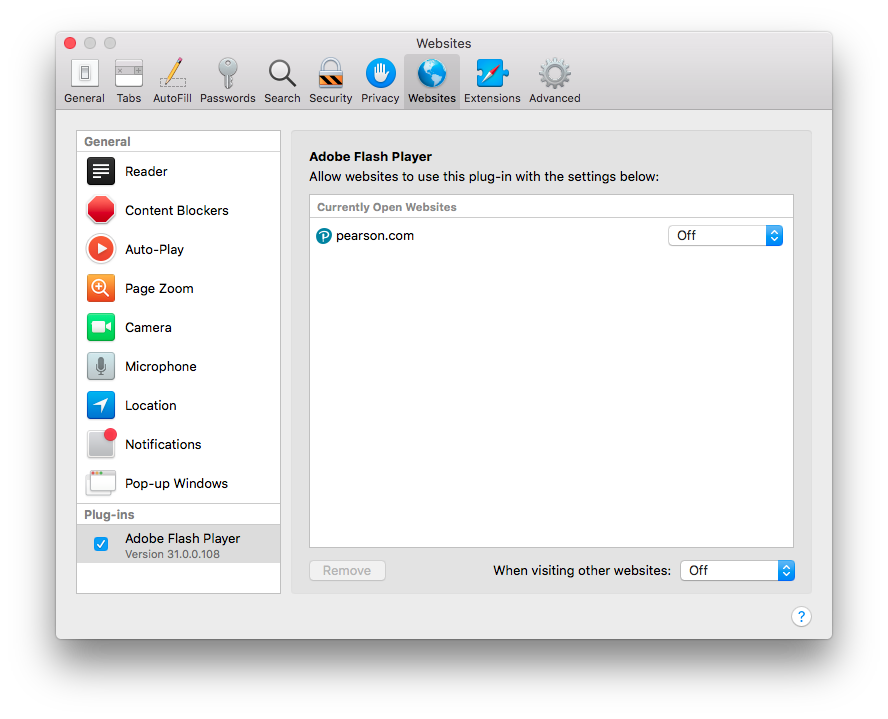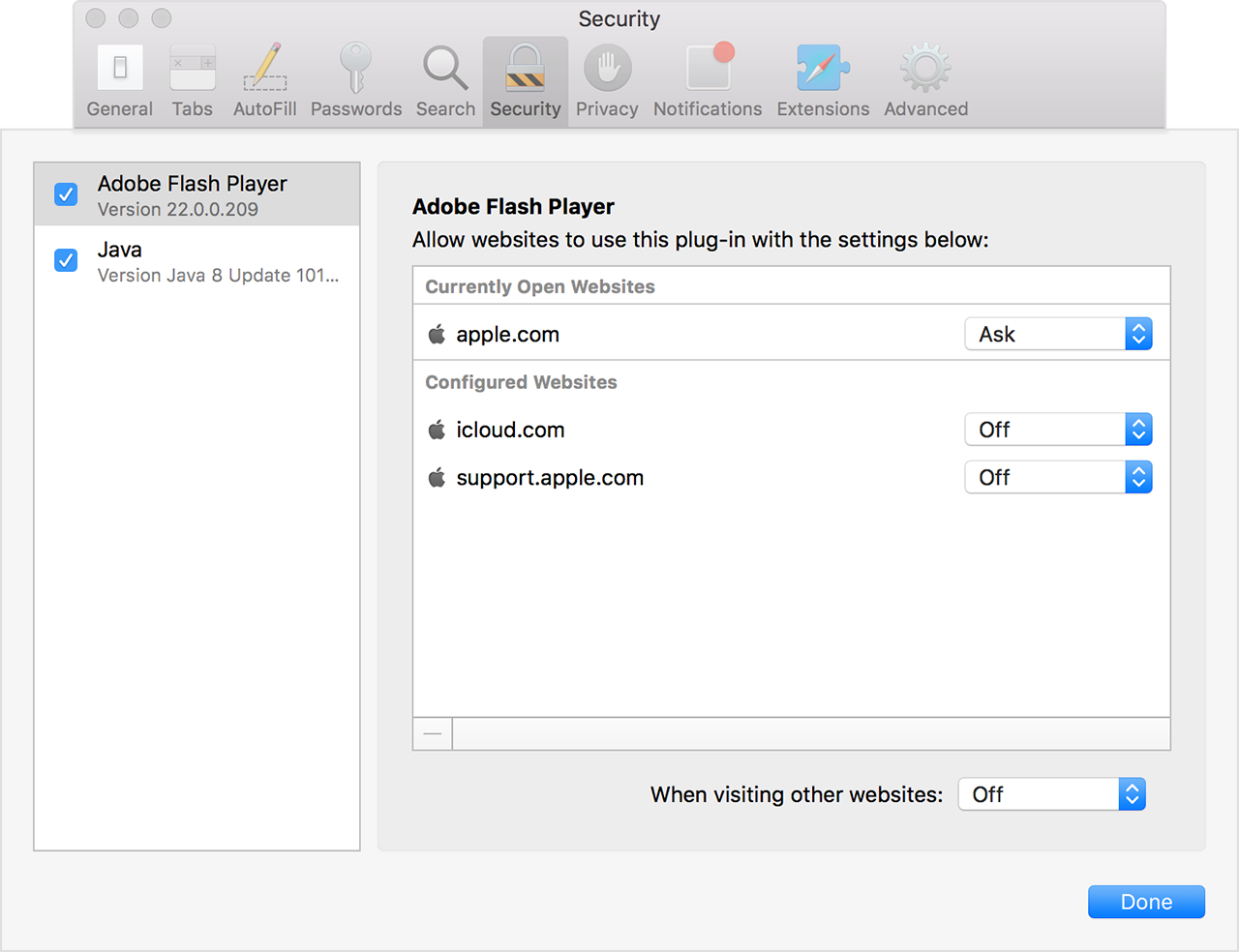Enable Plugins In Safari Settings
Most web browsers allow you to install extensions, also called 'add-ons.' Extensions are small applications that add features to your browser, and enhance or modify the way web pages are displayed.
- Enable Plugins In Internet Explorer
- Install Plugins For Safari
- Browser Plugin Settings
- Enable Plugins In Safari Settings Safari
Chuck Rogers offers good advice. Here’s a bit more background. Traditional plugins (sometimes called NPAPI plugins) were a major security nightmare, and no modern browser supports plugins. Plugins have been replaced with extensions, but if you hav. To get started with creating a Safari web extension, you have two options: Convert your existing extension into a Safari web extension, so you can use it in Safari on macOS and distribute it in the App Store. Xcode includes a command-line tool to simplify this process. Build a new Safari web extension in Xcode using the built-in template.
To find and add extensions, select your browser in the list below and follow the instructions.
Google Chrome
- Open Google Chrome.
- Access the Chrome Web Store.
- Search the store for a phrase or extension name, or scroll down to view recommended extensions.
- When you find an extension you want to install, click the button.
- In the confirmation box, click Add extension.
Firefox
- Open Mozilla Firefox.
- Access the Firefox Add-ons site.
- At the top of the page, click Extensions.
- In the Find add-ons search field, type a phrase or extension you want to find. You can also browse recommended extensions using the category buttons.
- When you find an extension you want to install, click the button.
- In the upper-right corner of the screen, click Install.
- When the installation is complete, a notification is displayed.
Microsoft Edge
- Open Microsoft Edge.
- Click the Settings and more icon in the upper-right corner of the browser window.
- In the drop-down menu, select Extensions.
- In the middle-left section of the screen, click the button.
- In the upper-left section of the next window, search for an extension.

- Once you find the add-on you want to install, click the Get button.
- Click Add extension in the prompt that appears.
Microsoft Edge Legacy
- Open Microsoft Edge Legacy.
- Click the More icon in the upper-right corner of the window.
- In the drop-down menu, select Extensions.
- Scroll down to browse suggested extensions. Or, at the bottom of the menu, click Explore more extensions to open the Microsoft Store.
- A list of recommended extensions is displayed. You can also click the Search button, and type a phrase or extension name.
- When you find an extension you want to install, click the Get button.
- When the extension finishes downloading, click the Launch button.
- To enable the extension now, click Turn it on.
Internet Explorer
- Open Internet Explorer.
- In the upper-right corner, click the gear icon.
- In the drop-down menu, select Manage add-ons.
Enable Plugins In Internet Explorer
- In the Manage Add-ons window, click Toolbars and extensions on the left side.

- In the bottom-left corner of that same window, click the Find more toolbars and extensions link.
- When you find an add-on you want to install, click the Add button next to it.
- At the confirmation message, click Add.
Safari
In Safari, getting an extension is a two-step process. First, you need to install the extension, and then you need to enable it.
Install the extension
- Open Safari.
- In the menu bar, open the Safari menu, and select Safari Extensions.
- The App Store opens and displays information about extensions, including recommendations. If you want to search for extensions, click Done in the upper-right corner of the window.
- The main App Store opens. On the left, search for safari extensions to list available extensions.
- If you want to search for an extension that matches a name or description, search for 'safari extensionphrase.' For example, to find an ad blocker, search for 'safari extension ad blocker,' or 'safari ad blocker.'
- To install an extension, click the Get button. Then, click Install.
- If you are prompted to log in, enter your Apple ID and password, then click Get.
- Wait for the progress meter to complete. Then, click Open to launch the extension's application, or close the App Store and continue using Safari.
Enable the extension
The new Safari extension is installed, but is not yet enabled. To enable it, follow these steps.
- In the menu bar, click the selector, and select Preferences.
- In the Preferences window, click Extensions. Your extensions are displayed on the left.
When you install a single extension in the App Store, it might install multiple component extensions in Safari, as in this example. Component extensions must be enabled individually.
- To enable an extension, check the box next to its name.
Install Plugins For Safari
Opera
- Open Opera.
- Click the icon in the upper-left corner.
- Select Extensions, then select Get extensions.
- In the Search for add-ons text box, enter a phrase or extension name to find. You can also scroll down to browse popular and recommended extensions.
Browser Plugin Settings
- When you find an extension you want to install, click button.
Additional information
Enable Plugins In Safari Settings Safari
- See our plugin definition for further information and related links.